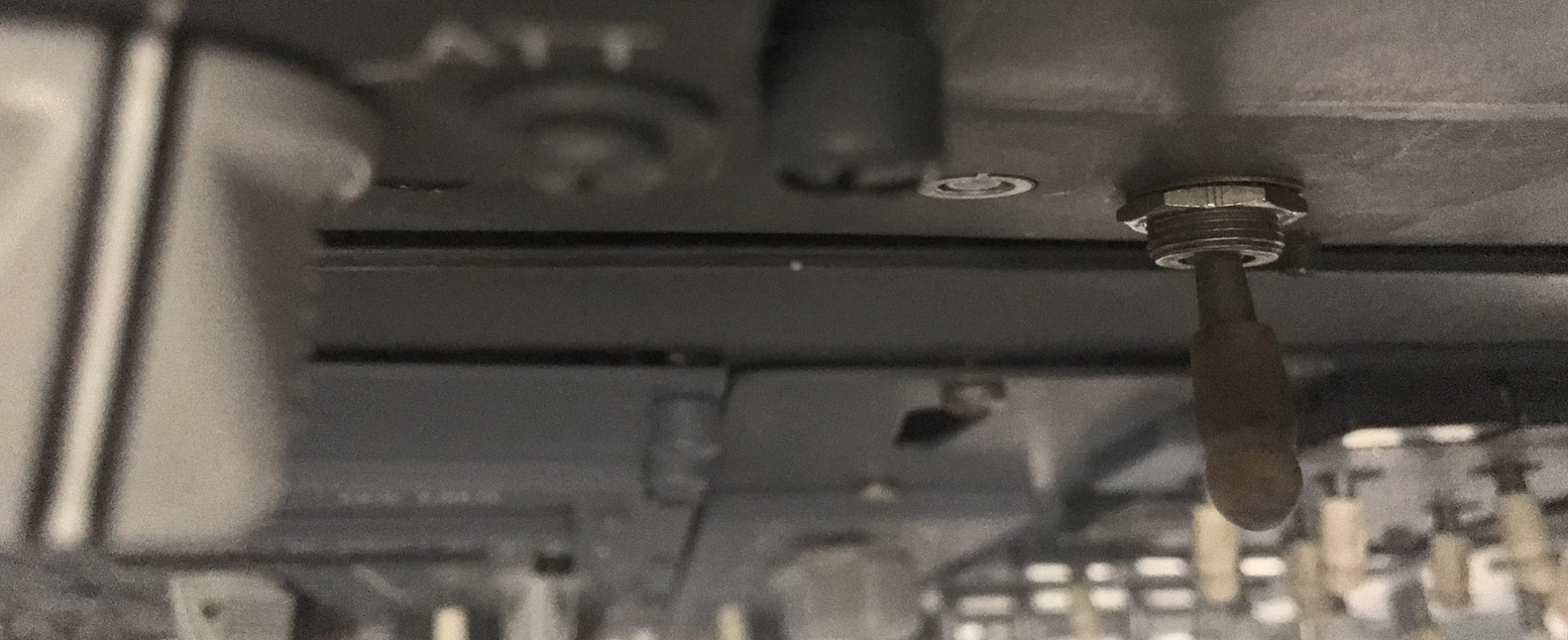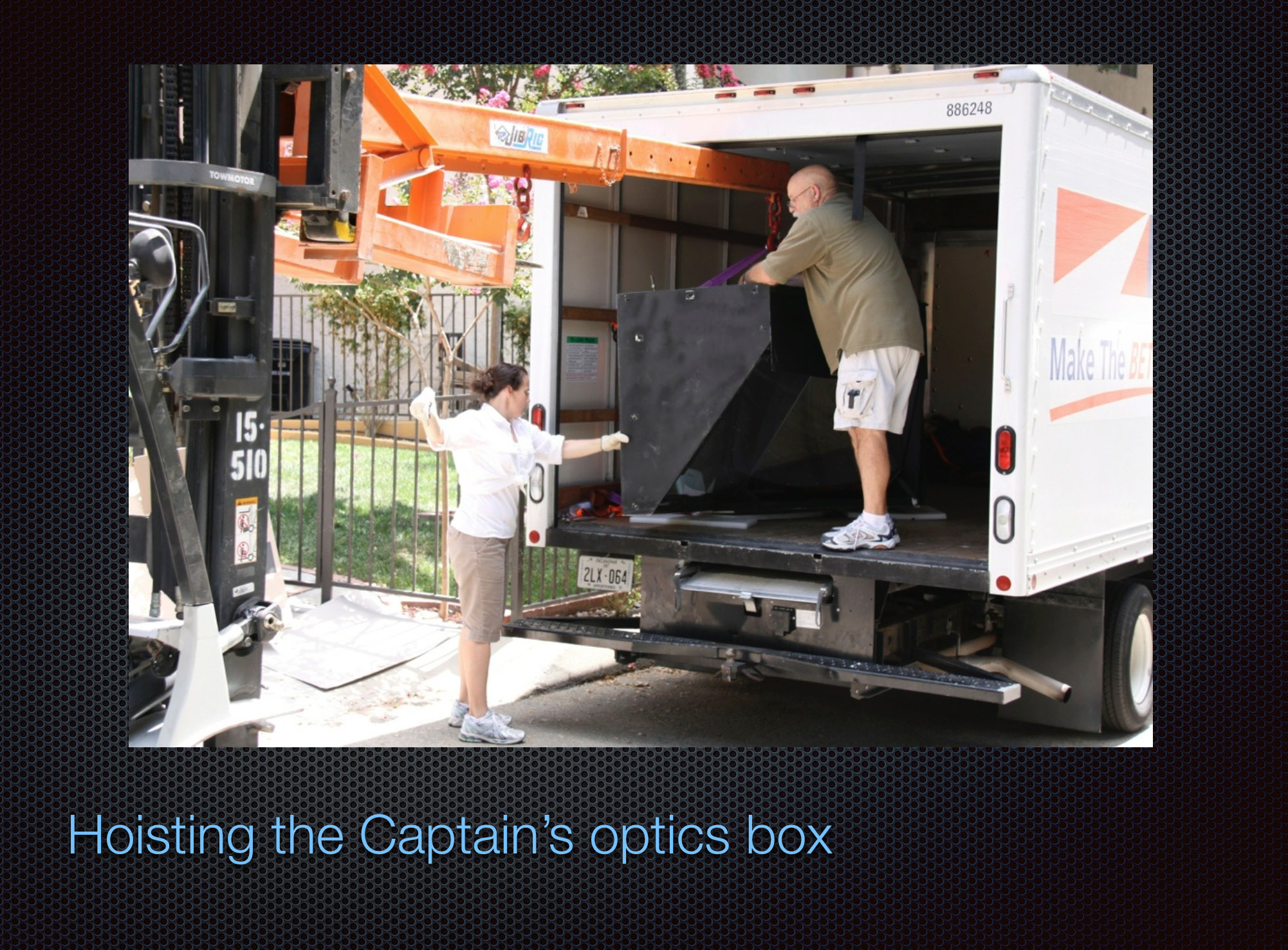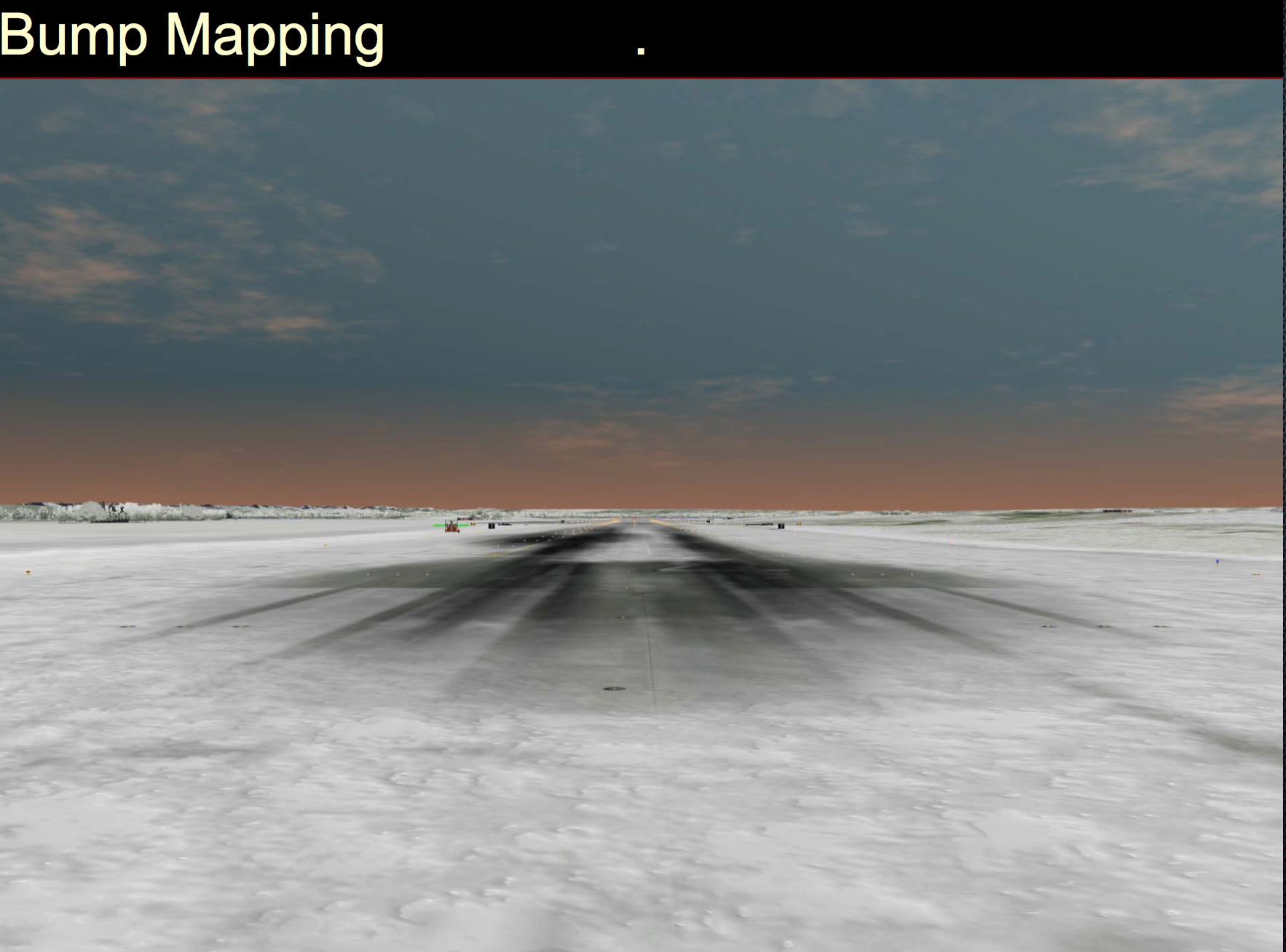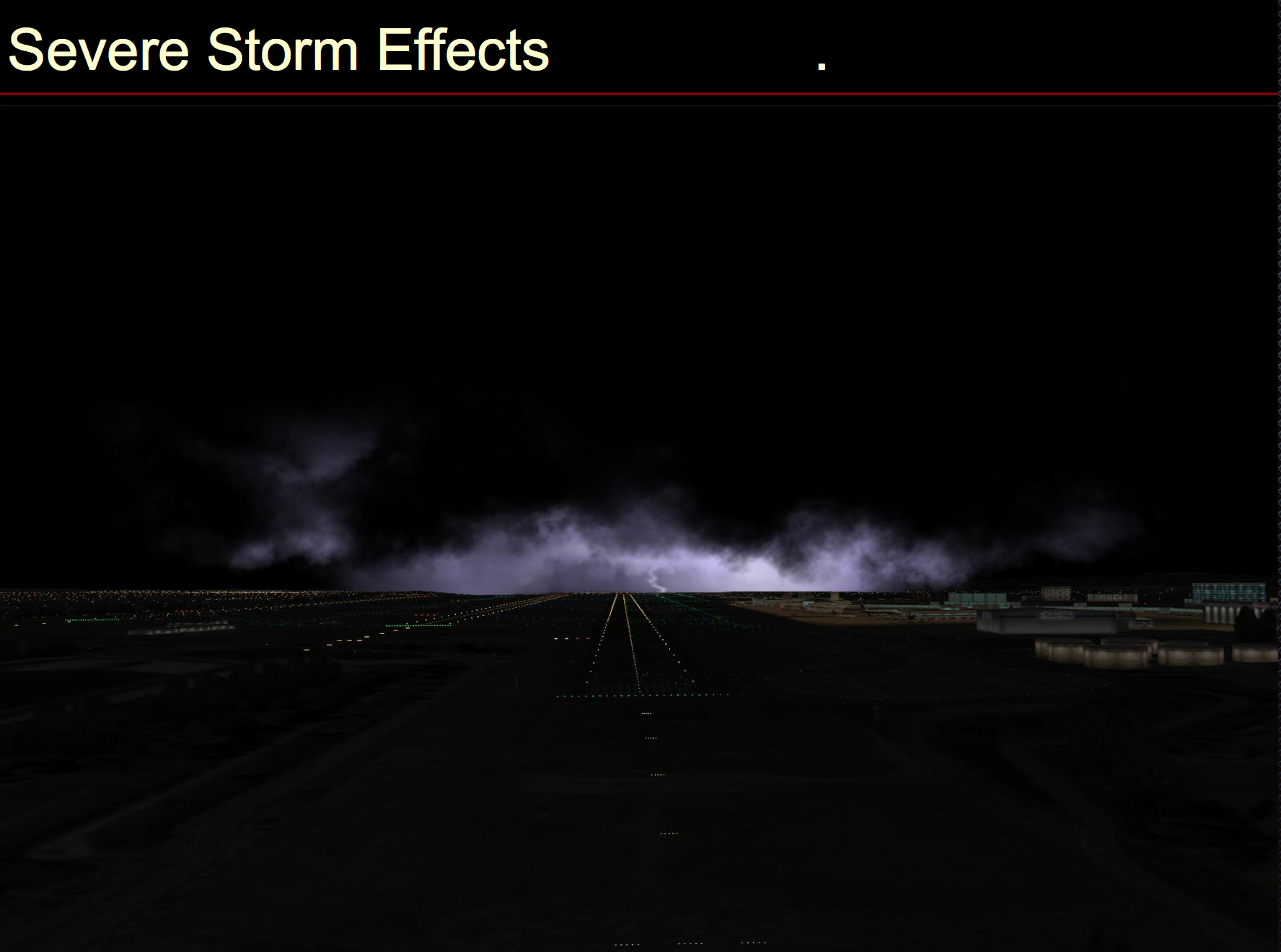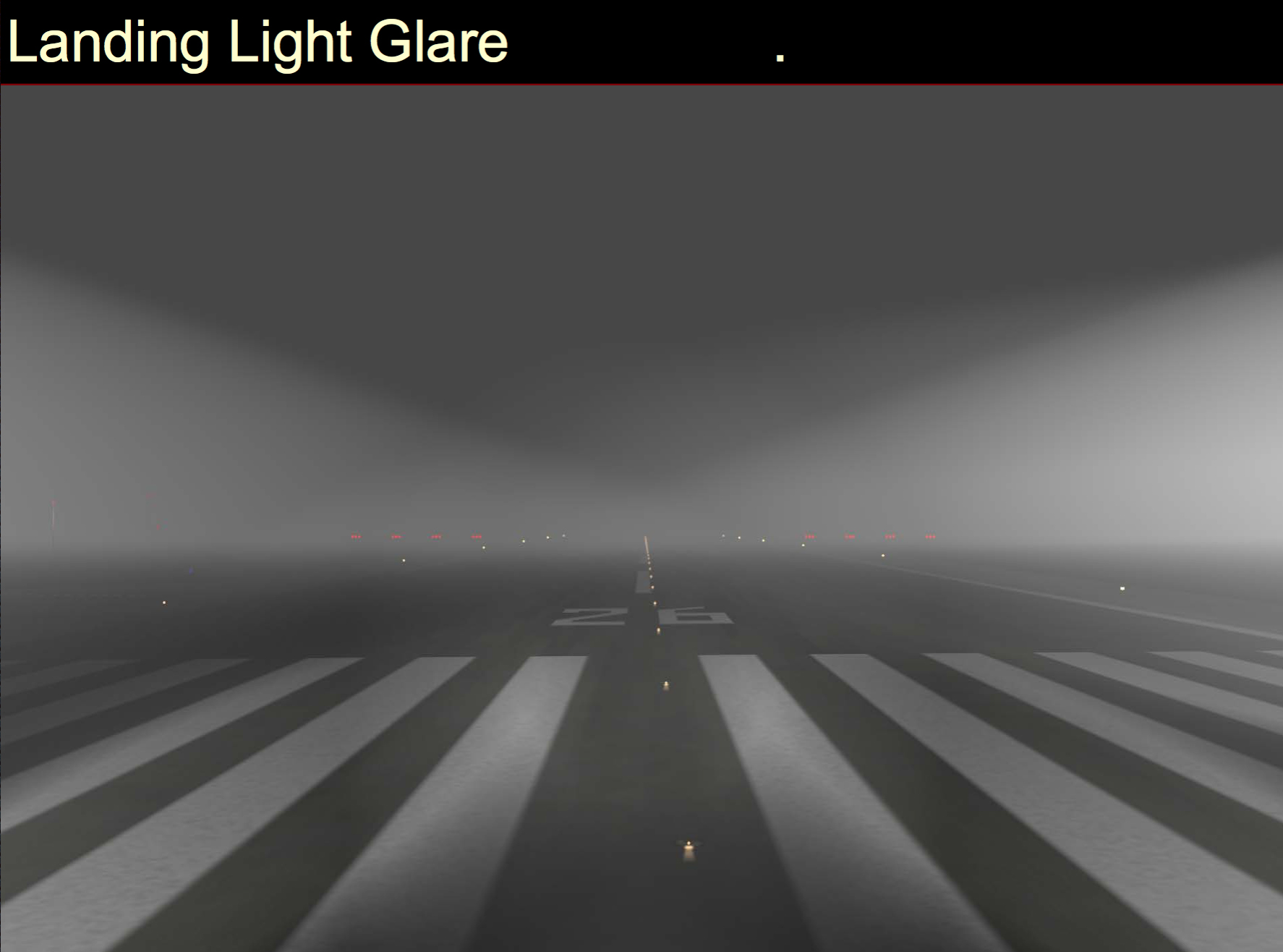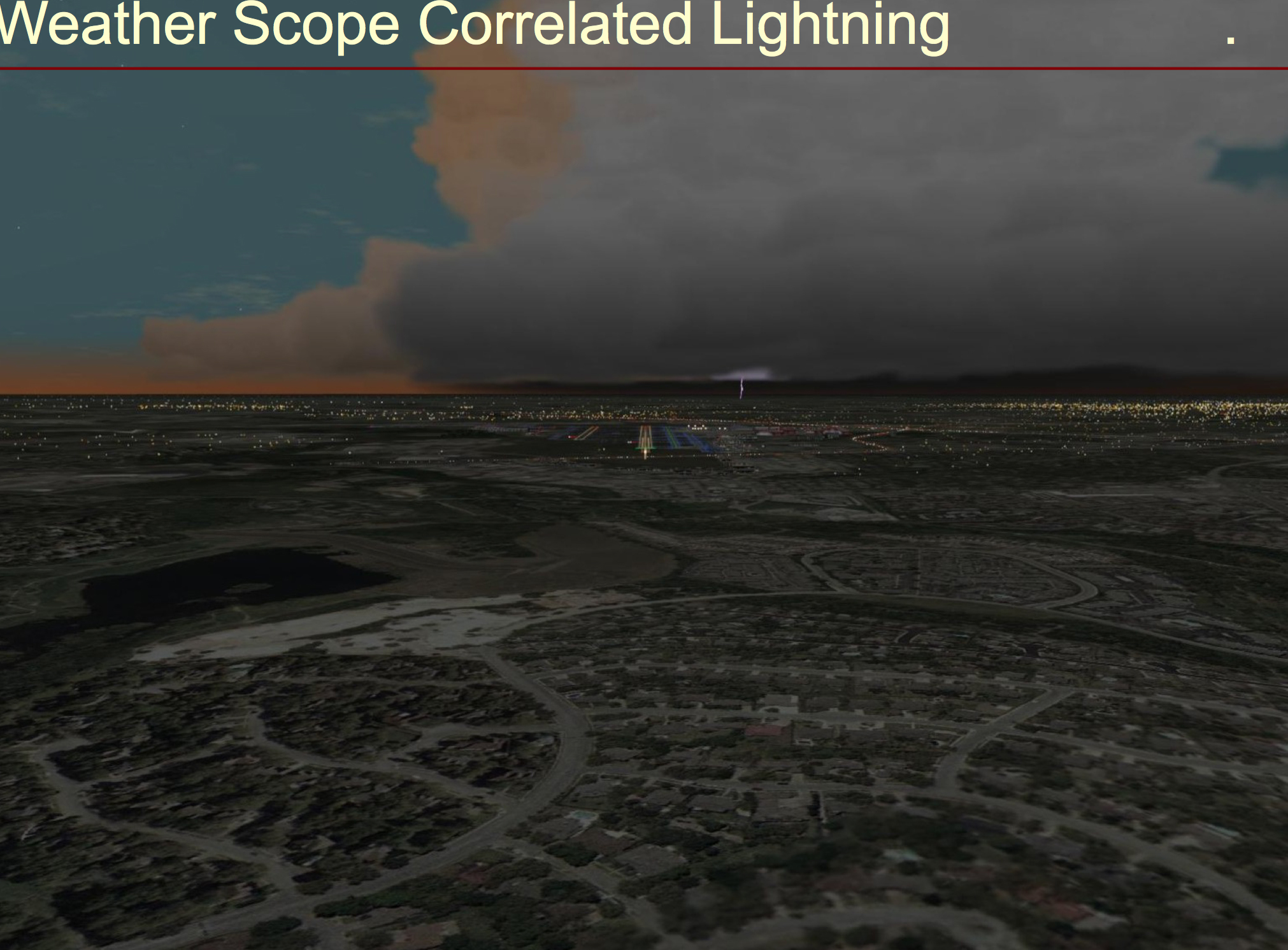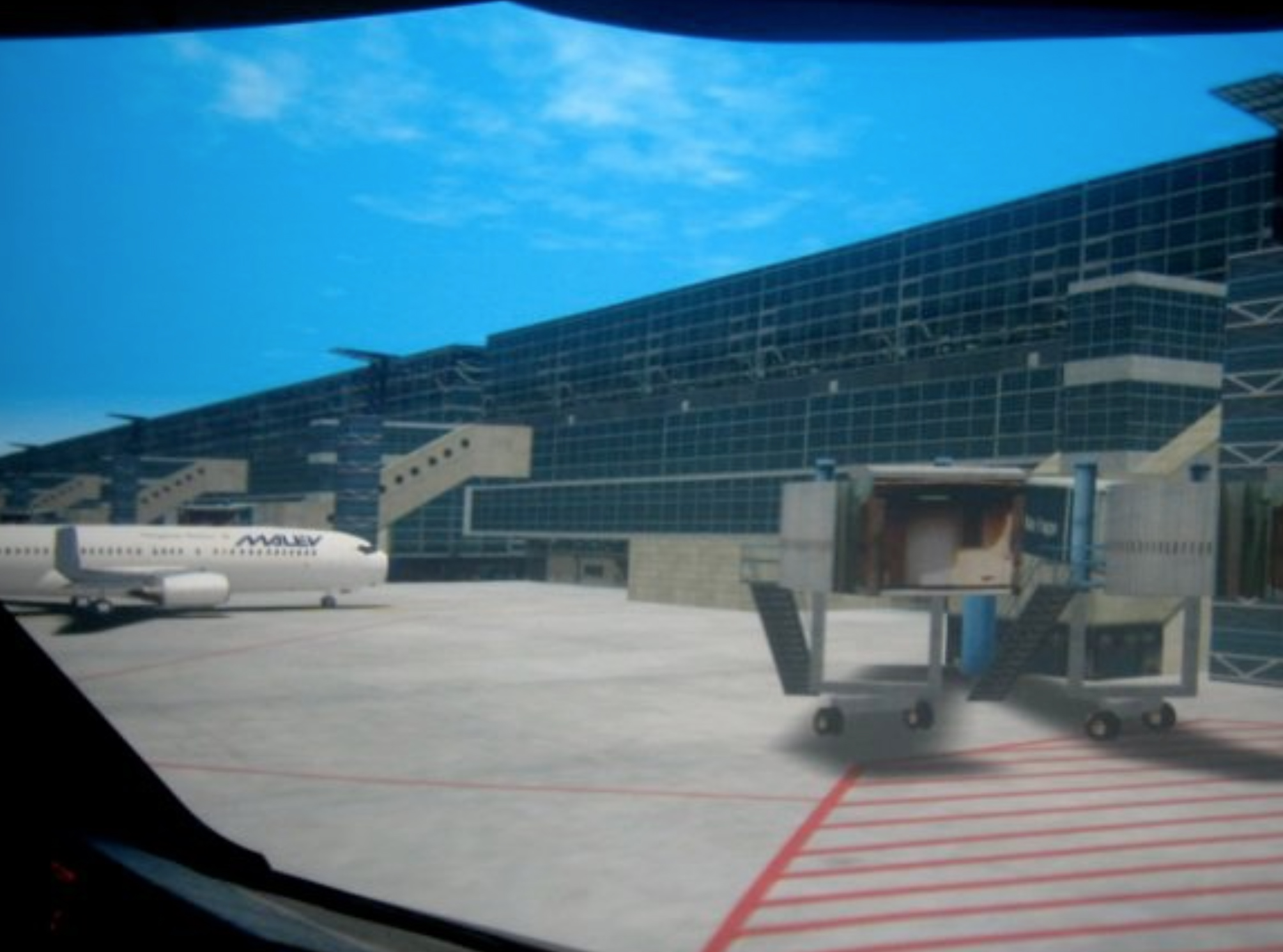Hardware
The visual system hardware consists of a Level B Collimated optical system out of a Boeing 737-300 full motion flight simulator.
Collimation is the bending of light rays so that they are parallel. This is how we see a 3D world and this system is used because it is the only way you can get a true 3D environment in a flight simulator. It also gives the best sense of motion to the viewer. Below is the operating principal of the system:
The optical system consists of 4 very large and thick spherical mirrors that sit in front of the pilot. Each pilot looks into 2 mirrors: one the forward view, the other the side view. This gives each pilot about 120 degrees of horizontal view. In front of each mirror is a beam splitter, or one way mirror, that reflects and magnifies the CRT monitor that sits above it facing the floor.
The optical system weighs about 2000 pounds due to the weight of the glass and frame. This system came from RSI Visual Systems from Dallas Texas. They create cutting edge visual systems for today’s full motion flight simulators. They are the best.
The system had to be trucked from Dallas back to California. Once it arrived I welded a support structure and then installed the system. It was quite an ordeal!
The visual system consists of a Level D Image Generator from RSI Visual Systems. This software is what is used in today’s state of the art full motion flight simulators. It provides an outside visual environment at super high resolution at a solid 60hz refresh rate which is an FAA requirement. The airport models are accurate down to every runway or taxiway marking.
There are 4 PC’s that run the visuals. One PC takes the flight data from X-Plane (latitude, longitude, heading, pitch, roll). The IOS and Sim Control send weather and aircraft light data. The other 3 PC’s drive the outside views (forward view, captain side, co pilot side).
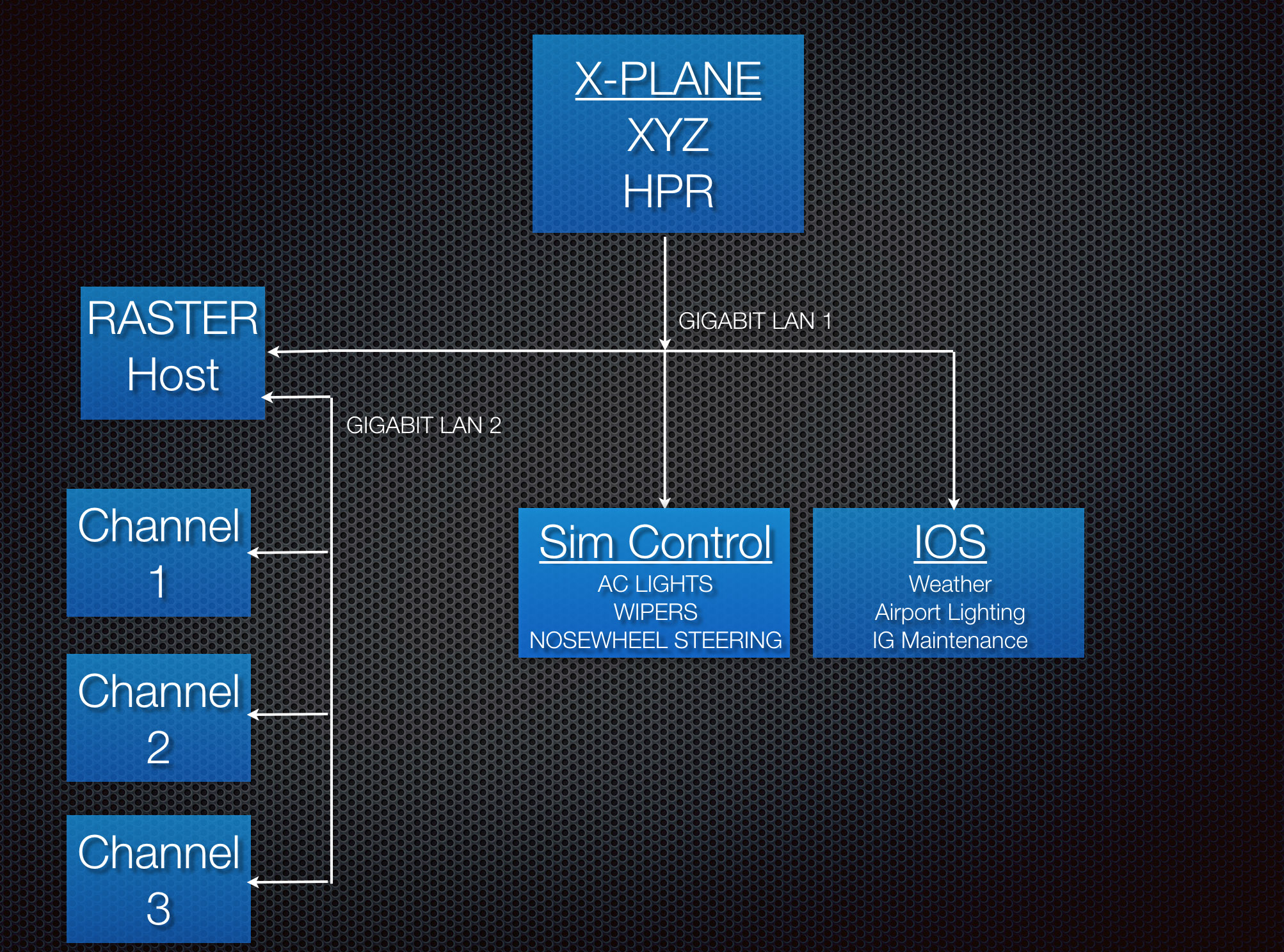
Below are some photos of the Raster XT visual system and it’s capabilities.
